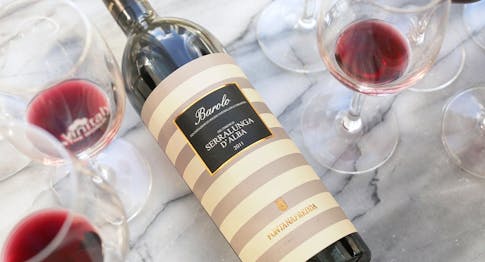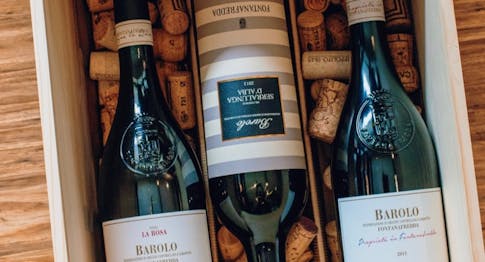Like all beautiful things, Fontanafredda is the product of a love story, between the first King of Italy, Vittorio Emanuele II, and Rosa Vercellana, to whom the future monarch gave the land, in 1858 as a love gift, where today stands the winery. Rosa, known as "La Bela Rusin", was a woman of humble origins, the daughter of the drum major of the army of the Royal House of Savoy. Despite society's reluctance, Vittorio did not give up and he married her anyway, naming her Countess of Mirafiore and Fontanafredda. From their relationship were born two children: Maria Vittoria and Emanuele Alberto, who founded the winegrowing estate, helping to make the name of Barolo internationally famous.
Fontanafredda has always been a pioneer of major innovations: in 1886, the first Barolo was sent overseas and, just one year later, the first concrete tanks in Europe were built in the cellars; in 1964, Barolo Vigna La Rosa was born, becoming the first Barolo to indicate the vineyard on the label, and in 1988, the first Barolo with a municipal designation was produced, vinifying the grapes of the municipality of Serralunga d’Alba separately. In 2006, Fontanafredda became an Olympic wine to commemorate the Olympic Games in Turin and it was around about this time that a path to raise awareness of the need for sustainability began. The big change came in 2008, when Oscar Farinetti and Luca Baffigo bought Fontanafredda, bringing it back under Piedmontese ownership after 77 years. Right from the start, the new goals were quality, sustainability, and hospitality.
2020 marked the birth of a new Fontanafredda, better than before and more respectful of our planet. After much thought about how to create new opportunities, the need for a change of perspective emerged: 500 years after the first Italian Renaissance, we now have the Green Renaissance. The scenario changes and the values evolve, but the results achieved are the same: a rebirth, a renewal.
Today, more than 165 years later, the estate continues to produce wines of the highest caliber, thanks to the respect of the land, passion for vinicultural tradition, and the use of innovative technology.
The diverse soils of Fontanafredda’s property tend to be chalky, which helps the grape retain its acidity. Within a few feet, the soil can vary from loose with high sand content to firm and rich in silt and clay. This diversity lends itself to the various characteristics of the vines planted on these hills (think: Le Langhe’s famous terroir). Only grapes of certified origin that are grown on the Fontanafredda estates are used to produce the brand’s wines. All estate vineyards are farmed without the use of chemicals; the property is under conversion to be certified organic and a safe and sustainable refuge for a wide array of local flora and fauna.
After the grapes are harvested, the wine-making process continues in Fontanafredda’s cellars. Beneath high brick-vaulted ceilings, the oak casks and steel vats housed in the majestic nineteenth-century cellars accommodate the noble red wines for their aging, while newer buildings are equipped with all the technology that is essential today to bring out the best in the characteristics of the white and sparkling wines. This skillful procedure prioritizes the safeguarding of values such as identity and origin and allows the two “souls” of Fontanafredda – still and sparkling wines – to coexist harmoniously.
Taste the premium wines of Fontanafredda for yourself at your local Eataly!




